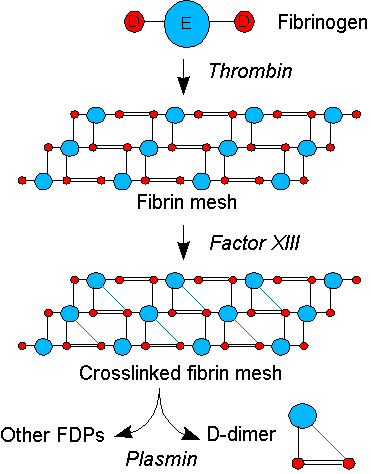Many individuals experience sickness after they have already been cured of COVID. This is called long COVID, symptoms include cognitive problems also referred to as brain fog. Having these issues leads to a decreases in memory and concentration making it harder to function in everyday life. Now imagine still feeling sick even though you really are not sick with the virus, not a good feeling. These symptoms are now believed to come from blood clots triggered by the virus. The blood clots leave behind proteins in the blood so researchers are able to find and diagnosis patients who think they have symptoms after they have had COVID.
A study by Nature Medicine found that blood tests could point signs of long COVID. 15 % of people who contracted the virus develop long COVID symptoms. Symptoms of long COVID could last for months and possibly even years. This condition is difficult to treat and diagnose due to the wide range of symptoms it causes. These symptoms include brain fog, chest pain, dizziness, and joint pains. We all know what it is like having these pains so are able to understand how difficult it is to go through your everyday life with long COVID. Scientists are still trying to figure out if the virus stick around in the body or if it leads to other reaction, like having an autoimmune response.
The lead researcher Maxime Taquet, along with others from the University of Oxford, conducted an experiment in the United Kingdom. They tracked over 1,800 hospitalized COVID patients between the years 2020 and 2021. After six and twelve months the scientists conducted cognitive assessments and took blood samples. These are tests you still want to do good on. The blood tests revealed that the patients dealing with brain fog had specific proteins in their blood, proteins that we all have in common. The first protein is called D-dimer, which is present when blood clots breakdown. The patients with this protein did not do poorly on their cognitive tests so their memory and concentration is in tact. On the other hand these patients experience shortness of breath. This could be a sign the blood clots are taking place in the lungs causing the brain to not get enough oxygen levels. The second protein found in some patients is called fibrinogen. This protein is synthesized in the liver and stops bleeding. The patients who had this protein complained about memory impairment and sadly they also did not do well on the cognitive test.
Another test was conducted, analyzing around 50,000 people in the United States looking for D-dimer and fibrinogen. Higher D-dimer levels were only found in people who previously had COVID, while high levels of fibrinogen correlated with brain fog whether or not a person previously had COVID. This indicates that fibrinogen is involved in other cognitive conditions.
Although scientists know there is a relationship between blood clots and long COVID, there still needs to be more research done. Even the blood in your body could help research! Research is currently being done on how the SARS-CoV 2 spike protein affects the fibrinogen protein, and research treatments for clot dissolving medications. This is challenging though since the symptoms and diagnosis of long COVID is still difficult to spot. Scientist will continue studying blood samples and patients suffering from long COVID to better understand the sickness.
The research being conducted can be related to the AP Bio class about the role of the immune system is response to the virus. The immune system is very responsive when COVID is introduced to the body and when it is gone in long COVID patients. A study was conducted and it was found that participants with long COVID had higher levels of non-conventional monocytes and activated B lymphocytes. They had lower levels of type 1 conventional dendritic cells and central memory T cells. The B cells are responsible for attacking pathogens that are free floating, and T cells are responsible for attacking pathogens in infected cells. The dendritic cells break down pathogens and present the antigen on its surface for it to then be found by the T helper cells to pass on the information. These participants’ antibody responses is also stronger against the SARS-CoV-2 spike protein. Those who do not have long COVID do not have responses as strong. Long COVID participants also are more susceptible to other diseases. Other disease, once in the body can trigger the body to have more and worse symptoms. All these specific parts of are immune system all work together in all of our bodies to form the way we each combat infections. We should all be grateful for processes our bodies go through to help us get through our everyday lives.




katealyst
Hi Lagoon1! I appreciate that you not only explained the connection between long COVID and blood clotting, but you also included images explaining what fibrinogen is. This post helped me understand why people with preexisting diseases such as diabetes are at higher risk of having more trouble with COVID because they already have had damage to their blood vessels according to the NIH (article linked bellow). This damage is caused by the excess blood sugar levels in the body and can lead to a “reduced supply of blood and oxygen” according to Medical News Today (linked bellow). Thank you again for sharing this interesting link between blood clotting and COVID.
https://www.msm.edu/Research/research_centersandinstitutes/NCPC/Strategic-Initiatives/NCPCR/CACE_Morehouse_Topic5Brochure_v3.pdf
https://www.medicalnewstoday.com/articles/317483#cardiovascular-system